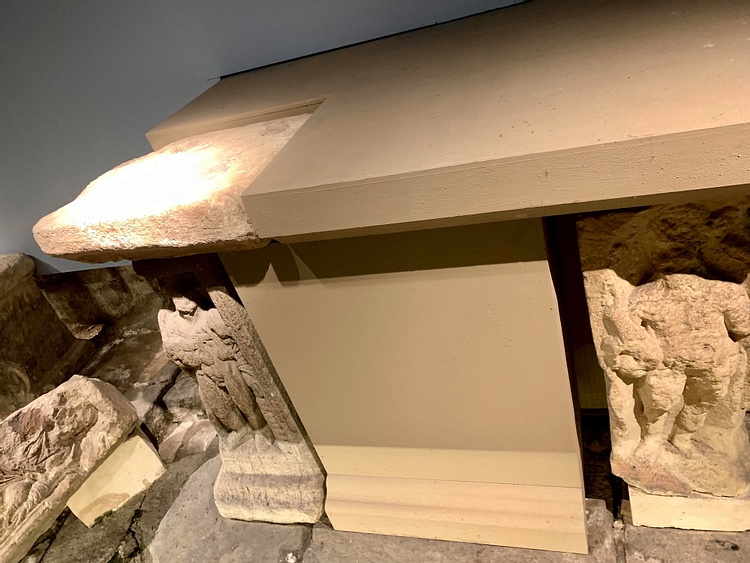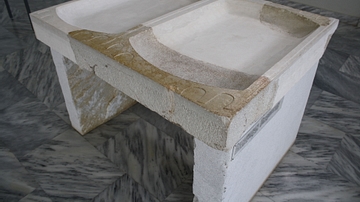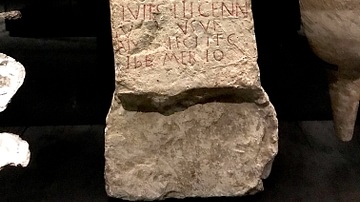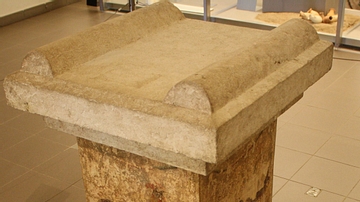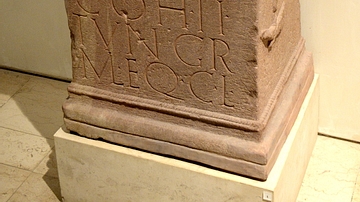Illustration
The sacrificial altar standing in the Temple Courtyard in Aquae Sulis (Bath). The altar was used for public ceremonies and animal sacrifices during the Roman period (1st - early 5th century CE). Carvings of Jupiter, Apollo, and other Roman gods and deities are still visible. Now in the Roman Baths Museum in Bath, UK.
About the Author
Cite This Work
APA Style
Marcussen, W. (2019, July 16). Roman Sacrificial Altar - Bath. World History Encyclopedia. Retrieved from https://www.worldhistory.org/image/11010/roman-sacrificial-altar---bath/
Chicago Style
Marcussen, Wanda. "Roman Sacrificial Altar - Bath." World History Encyclopedia. Last modified July 16, 2019. https://www.worldhistory.org/image/11010/roman-sacrificial-altar---bath/.
MLA Style
Marcussen, Wanda. "Roman Sacrificial Altar - Bath." World History Encyclopedia. World History Encyclopedia, 16 Jul 2019, https://www.worldhistory.org/image/11010/roman-sacrificial-altar---bath/. Web. 02 Jul 2025.

